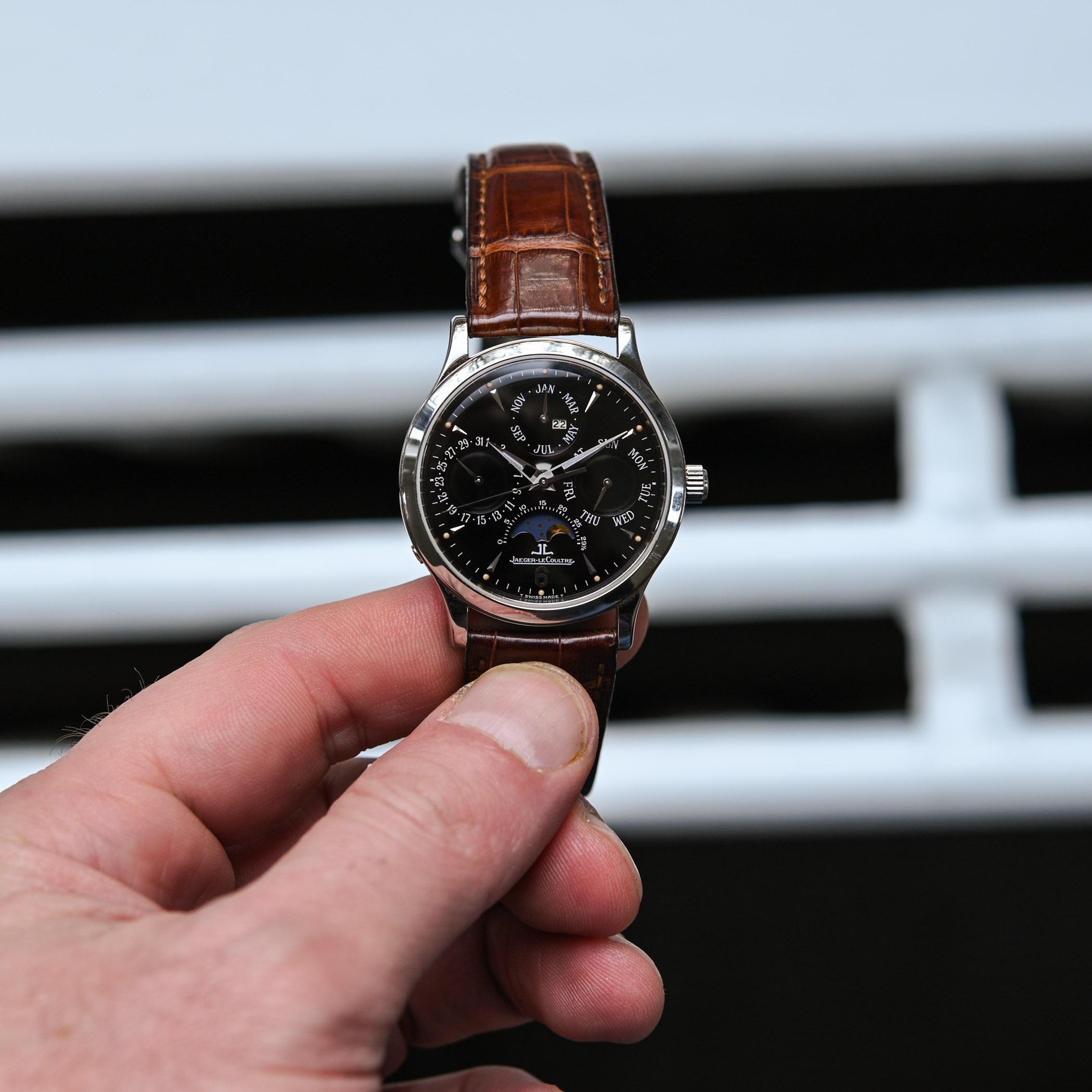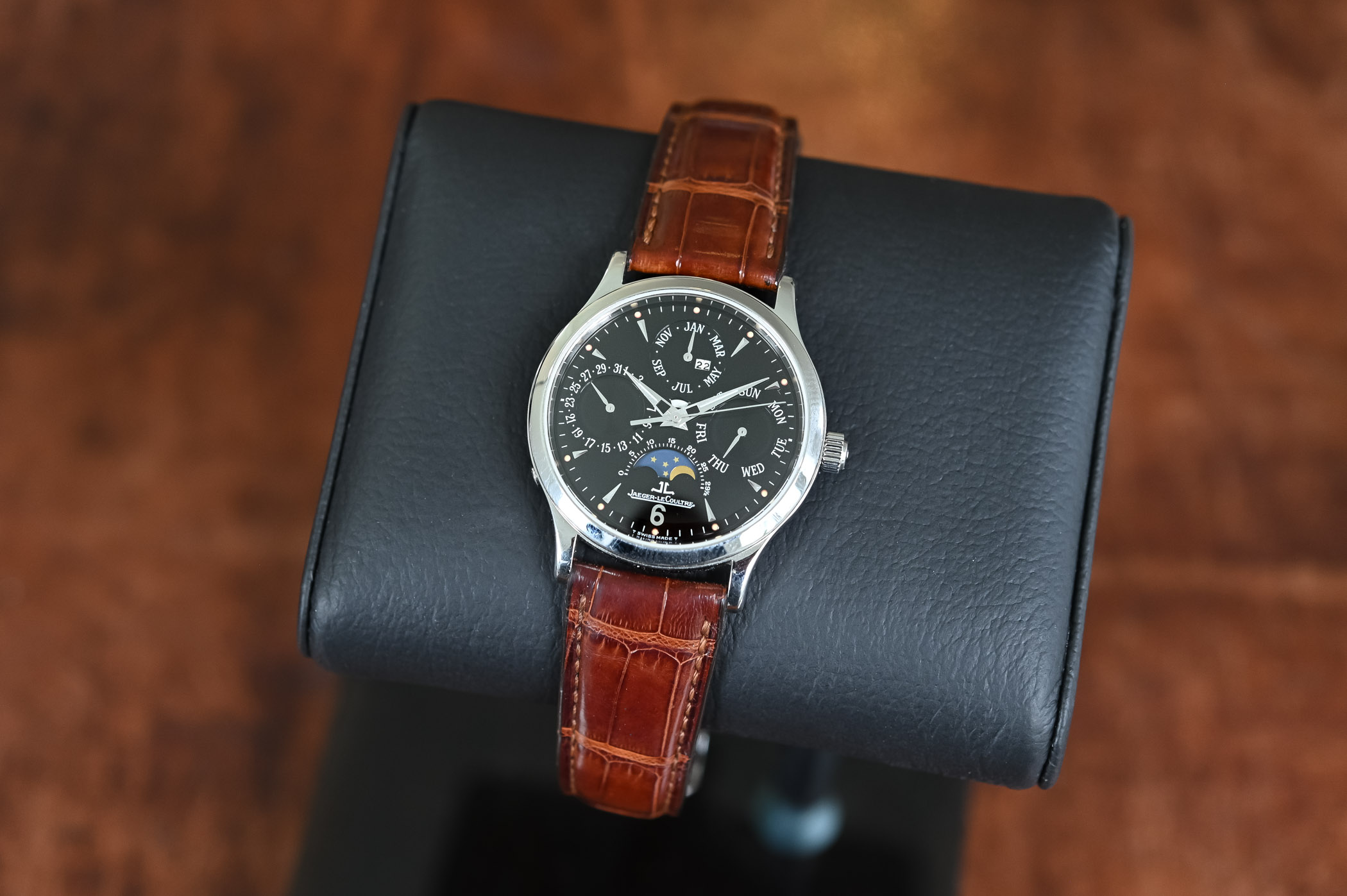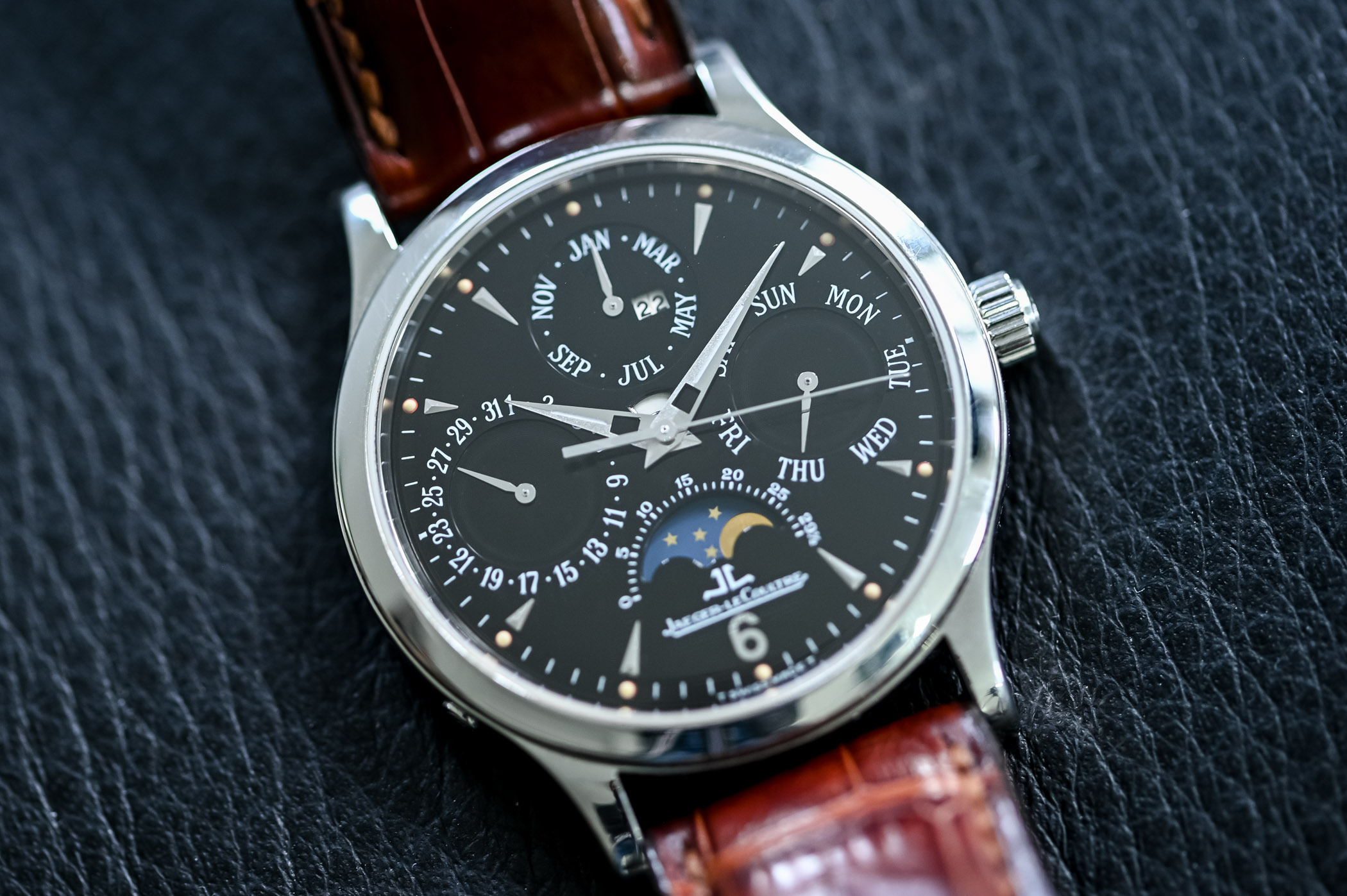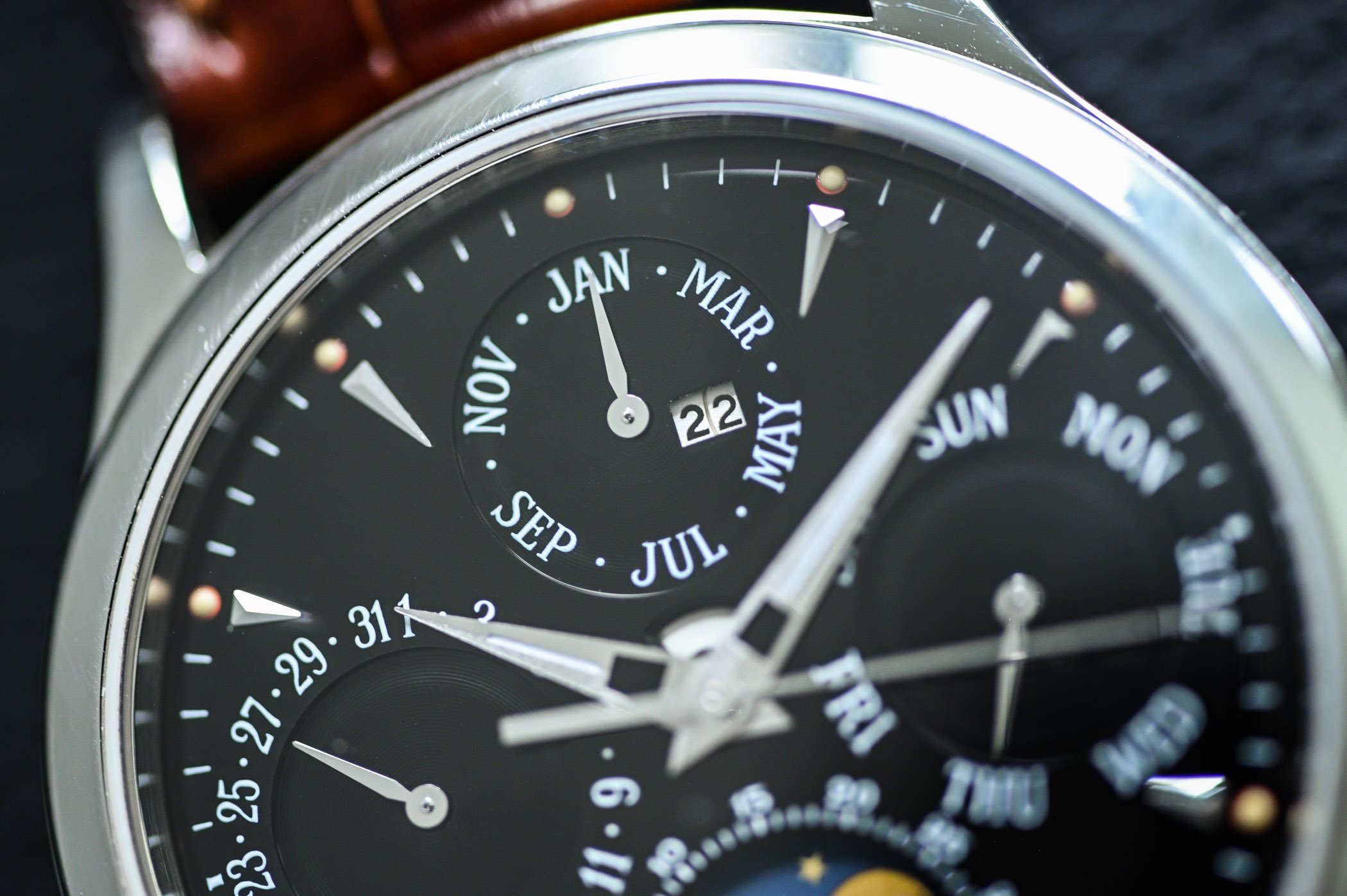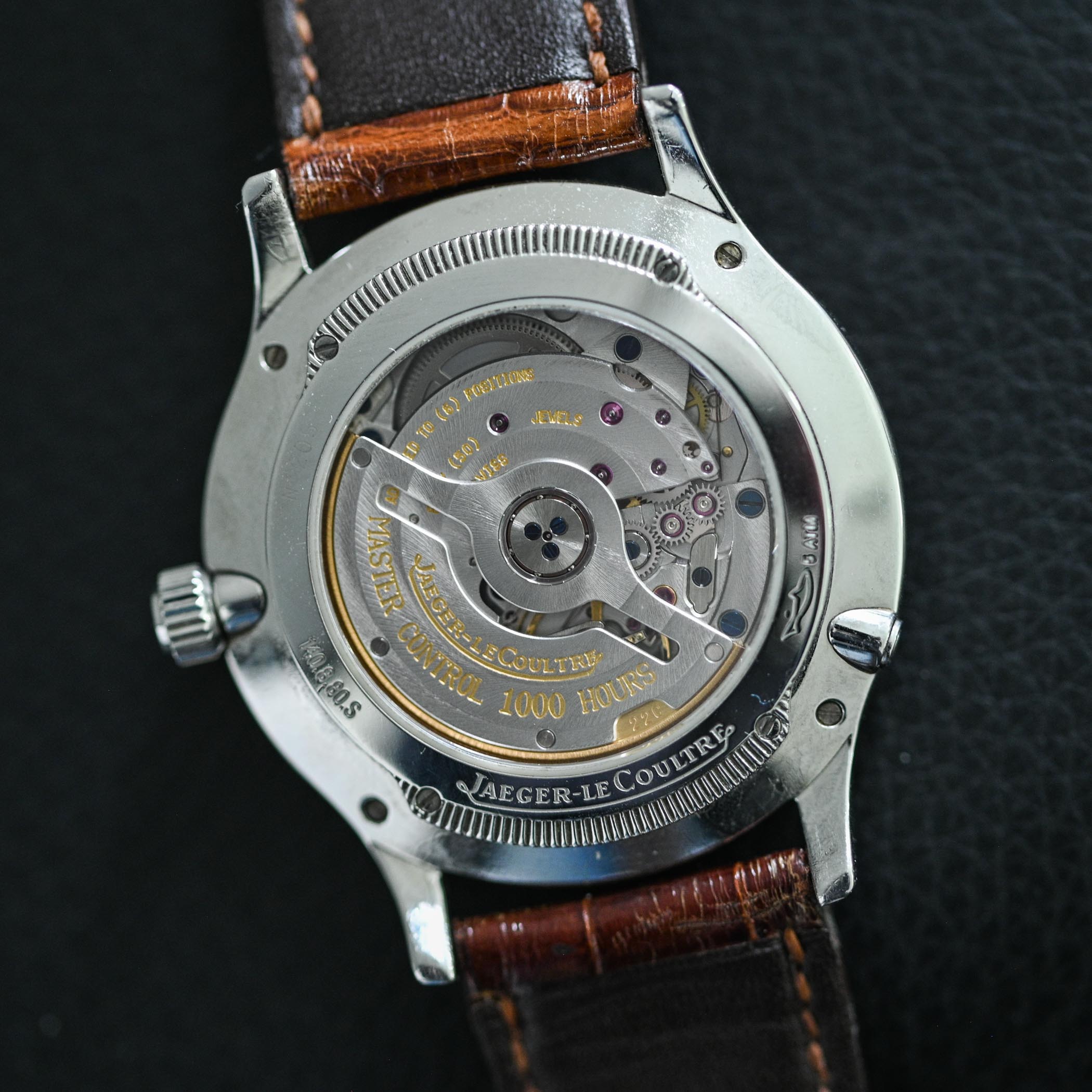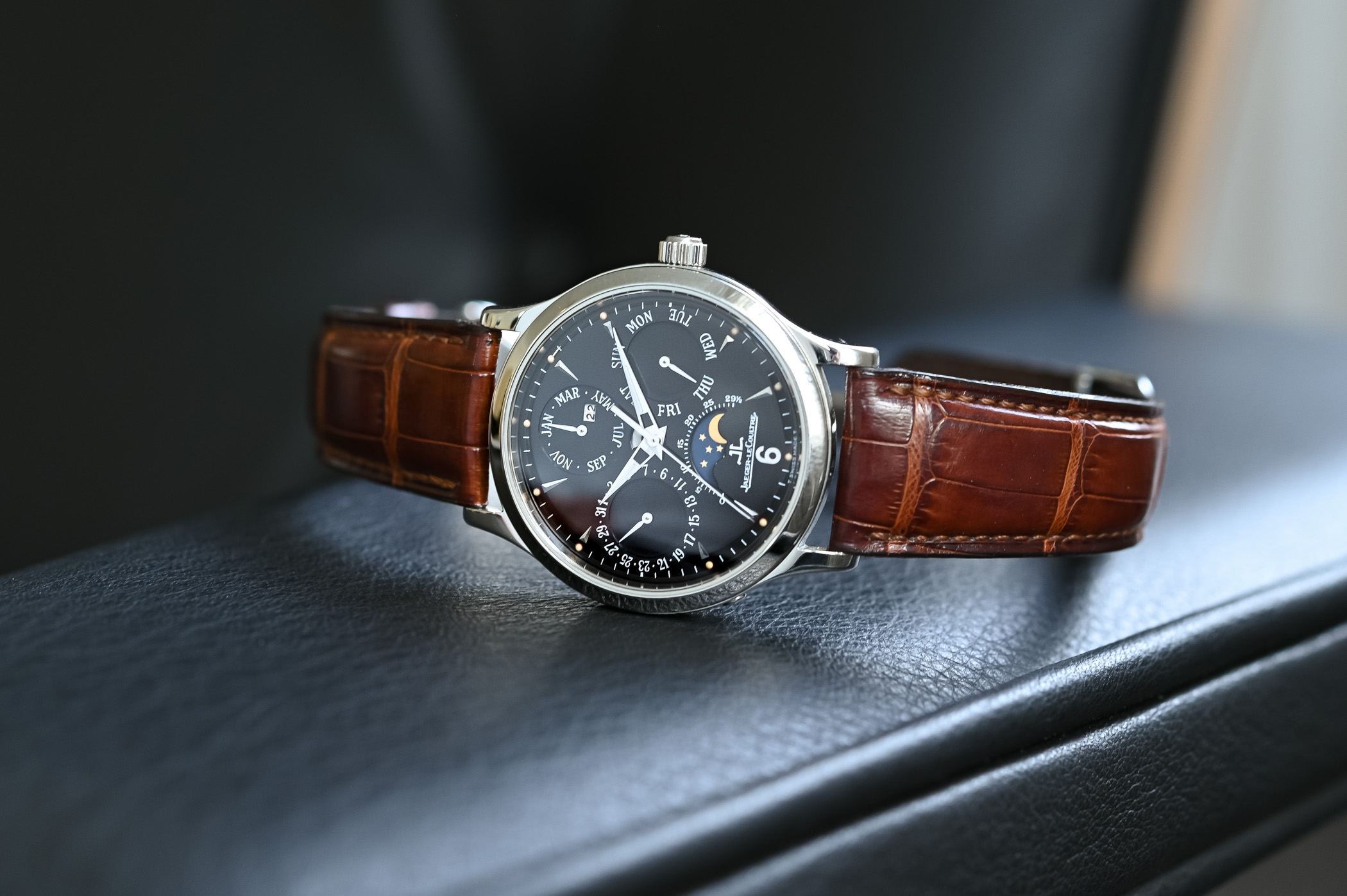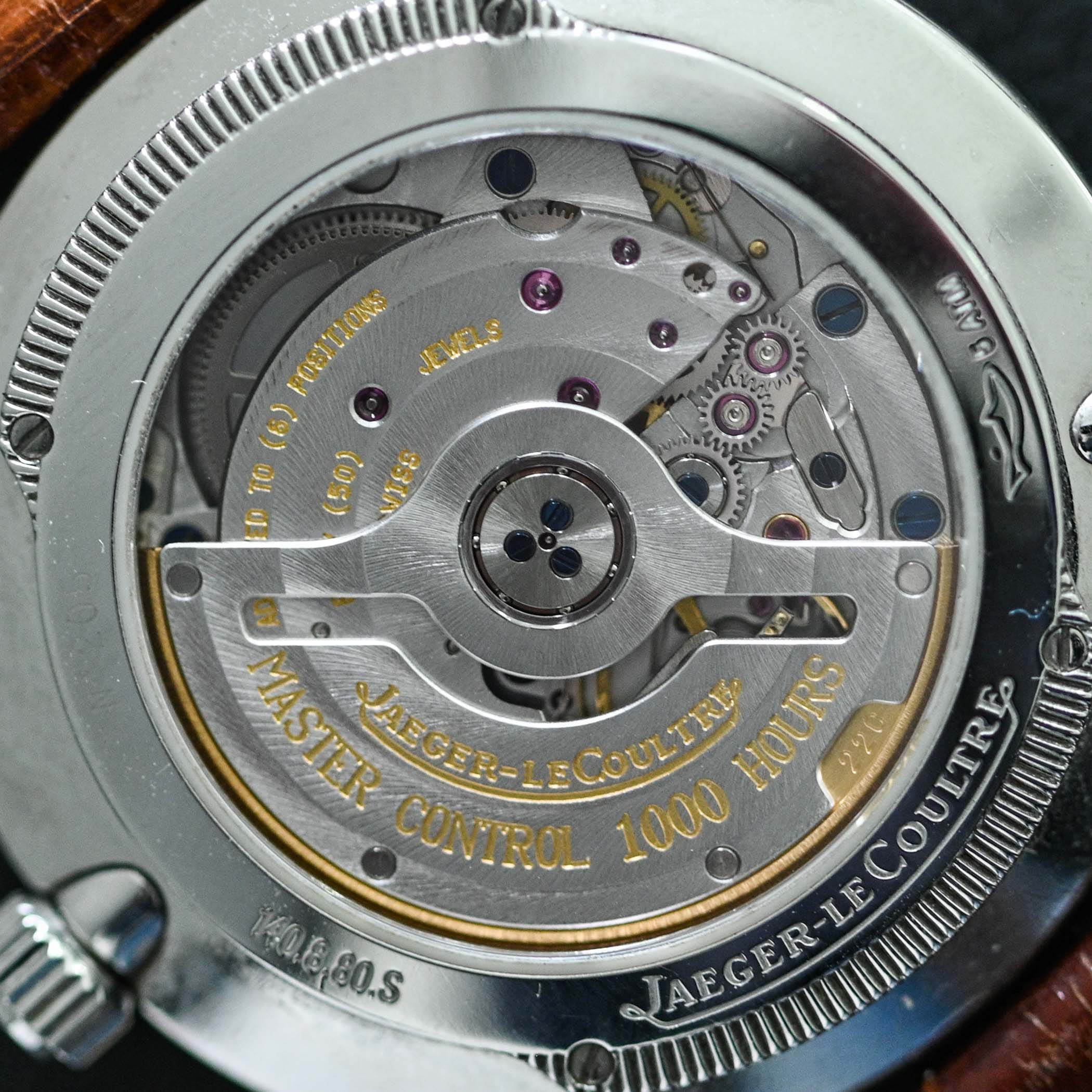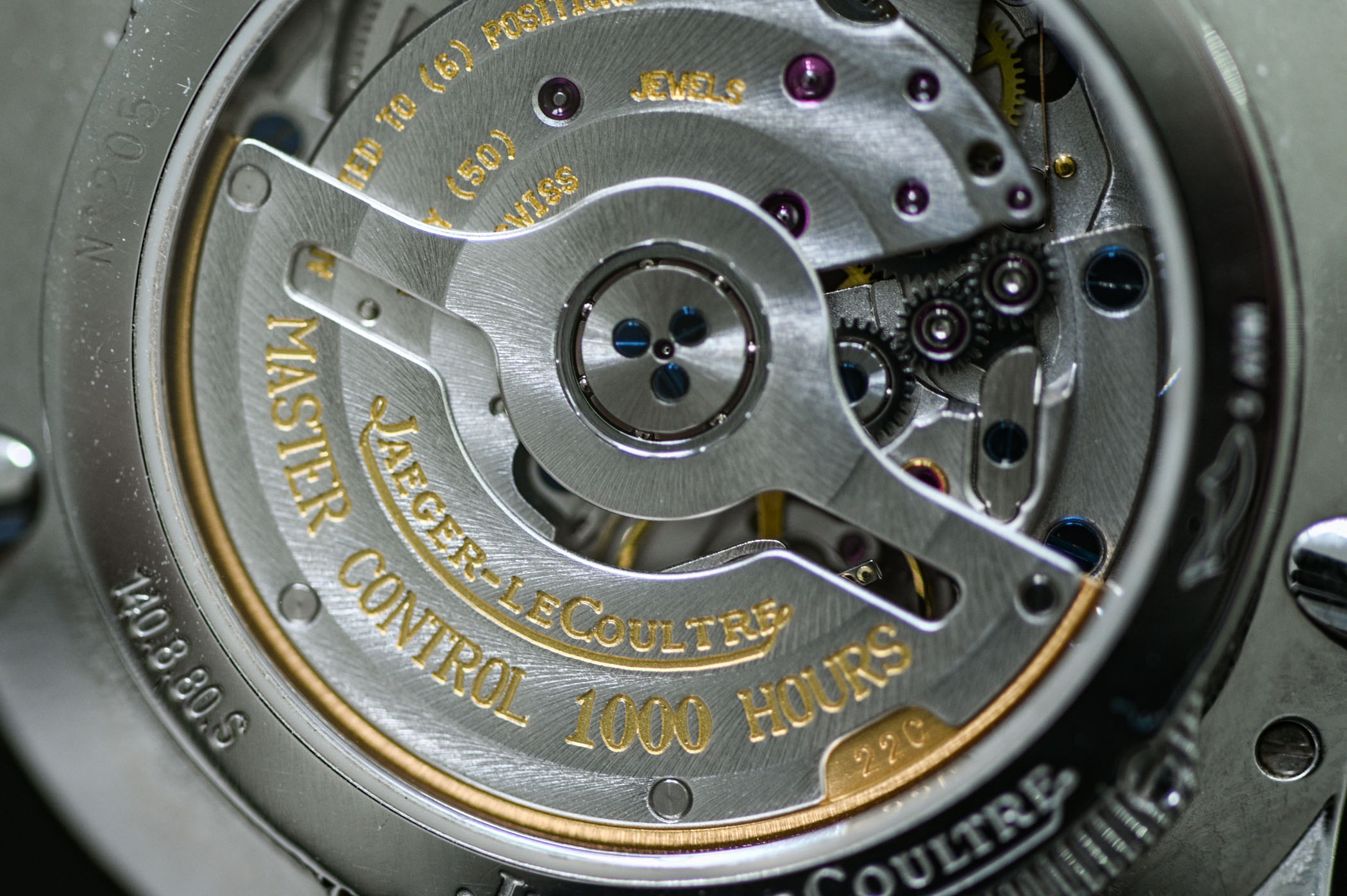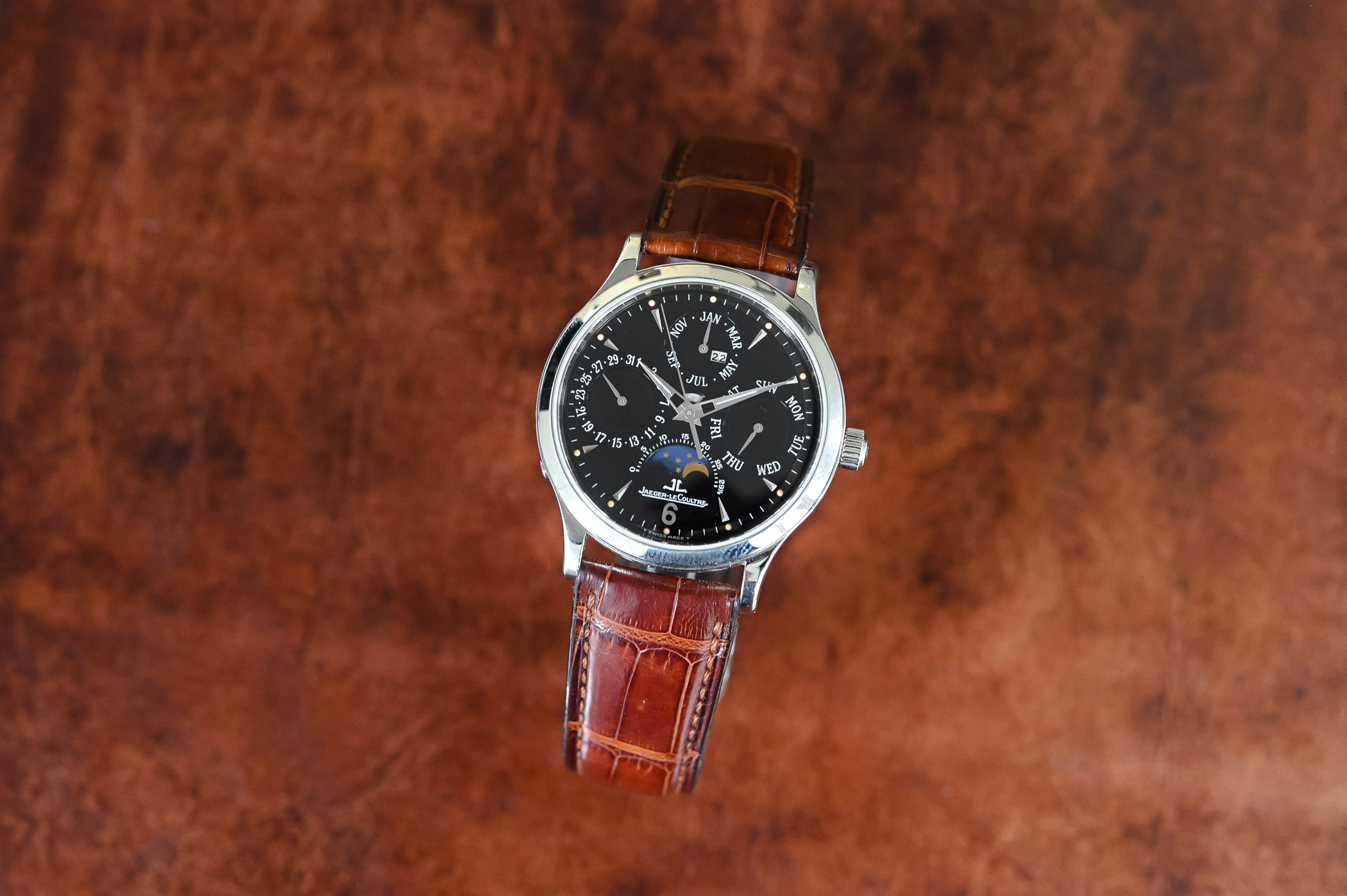The Essence of the Complicated “Sleeper” Watch, The Jaeger-LeCoultre Master Control Perpetual
An incredibly user-friendly and versatile perpetual calendar powered by legendary IWC master watchmaker Kurt Klaus.

For our new installment of The Collector’s Corner, we are returning to a Richemont brand, one that is known as “La Grande Maison”, or the watchmaker of watchmakers. That’s right, this week we are looking at Jaeger-LeCoultre, specifically, a 1990s hit that lives on in the current collection. We love complications here at MONOCHROME, and we are switching things up a bit and are going with the Master Control Perpetual Calendar, a watch that I love to name the forebear of the “Dr. Strange” watch. Let’s have a look at a typical complicated youngtimer.
After the quartz crisis led to a culling of the herd in the Swiss watch industry, the 1980s and 1990s were a time of rebirth and re-discovery. In French-speaking Switzerland, in Le Sentier, Jaeger-LeCoultre embarked on a journey to relearn mechanical complications by developing a series of six limited-edition Reversos in rose gold, each made in 500 pieces: power reserve and date, tourbillon, minute repeater, retrograde chronograph, dual-time, perpetual calendar. The 1990s also saw JLC introduce the Master Control, one of the Grande Maison’s most enduring collections.
A short Background of the JLC Master Control
Over its 189-year history, Jaeger-LeCoultre has developed over 1,200 different calibers (!) and filed more than 400 patents. Antoine LeCoultre made tremendous advancements in the field of precision, creating the world’s first device capable of measuring a micron in 1844. This milestone lay the groundwork for JLC’s success, for with increased ability to manufacture to tighter tolerances came higher precision, and greater accuracy, of its calibres. The company’s engineering prowess saw it rise in fame as a provider of premium ébauches, or base movements. While the Reverso became JLC’s design icon after the quartz crisis, the Master Control series represented the company’s technical focus.
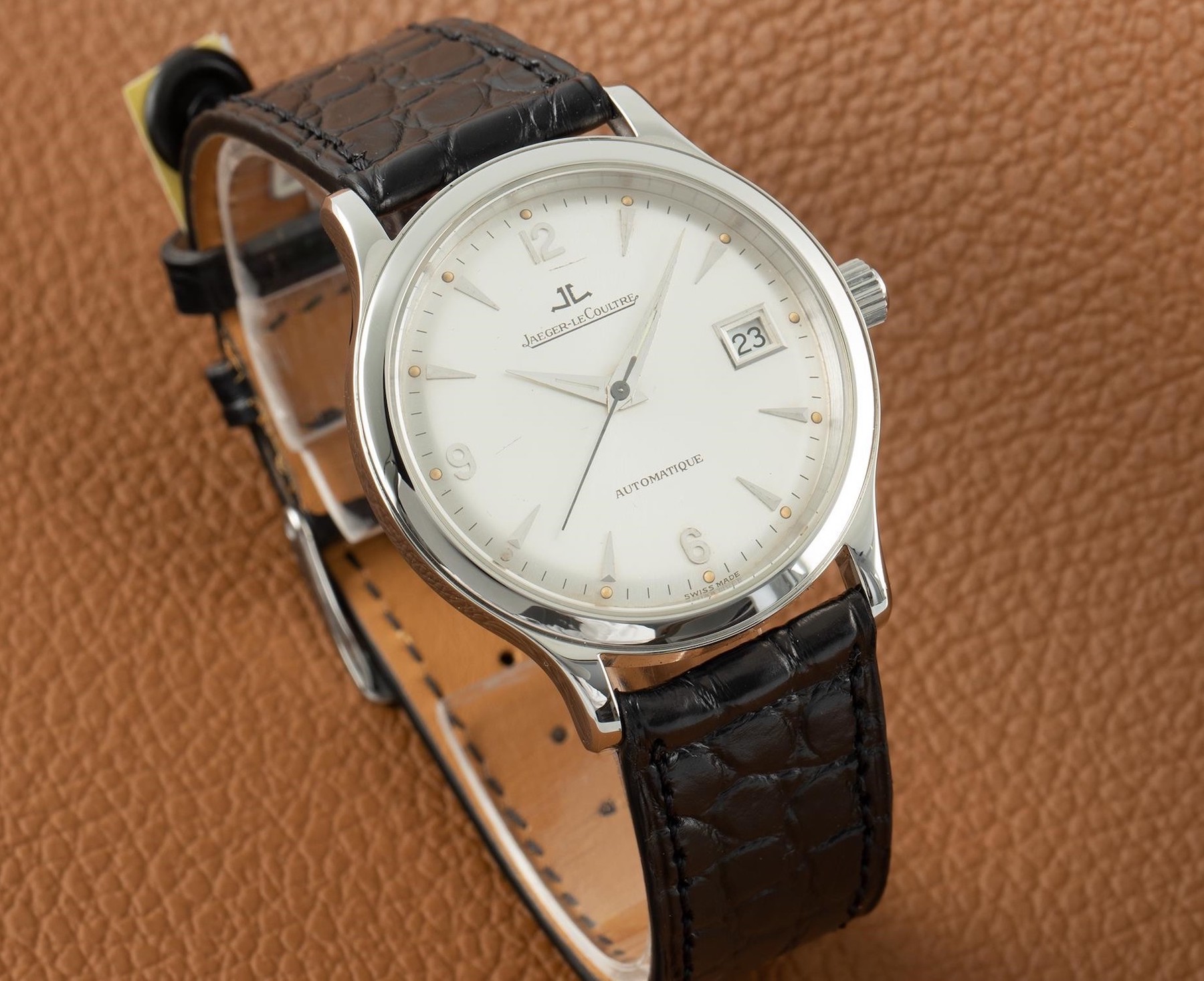
In 1992, JLC introduced the Master Control collection. The design cues of the watches of the Master Control series draw directly from Jaeger-LeCoultre’s watches of the past: the dauphine hands, blended lugs (think Patek Philippe Calatrava ref. 96), and even the font used for the applied Arabic numerals all were inspired by 1950s and 1960s JLC references.
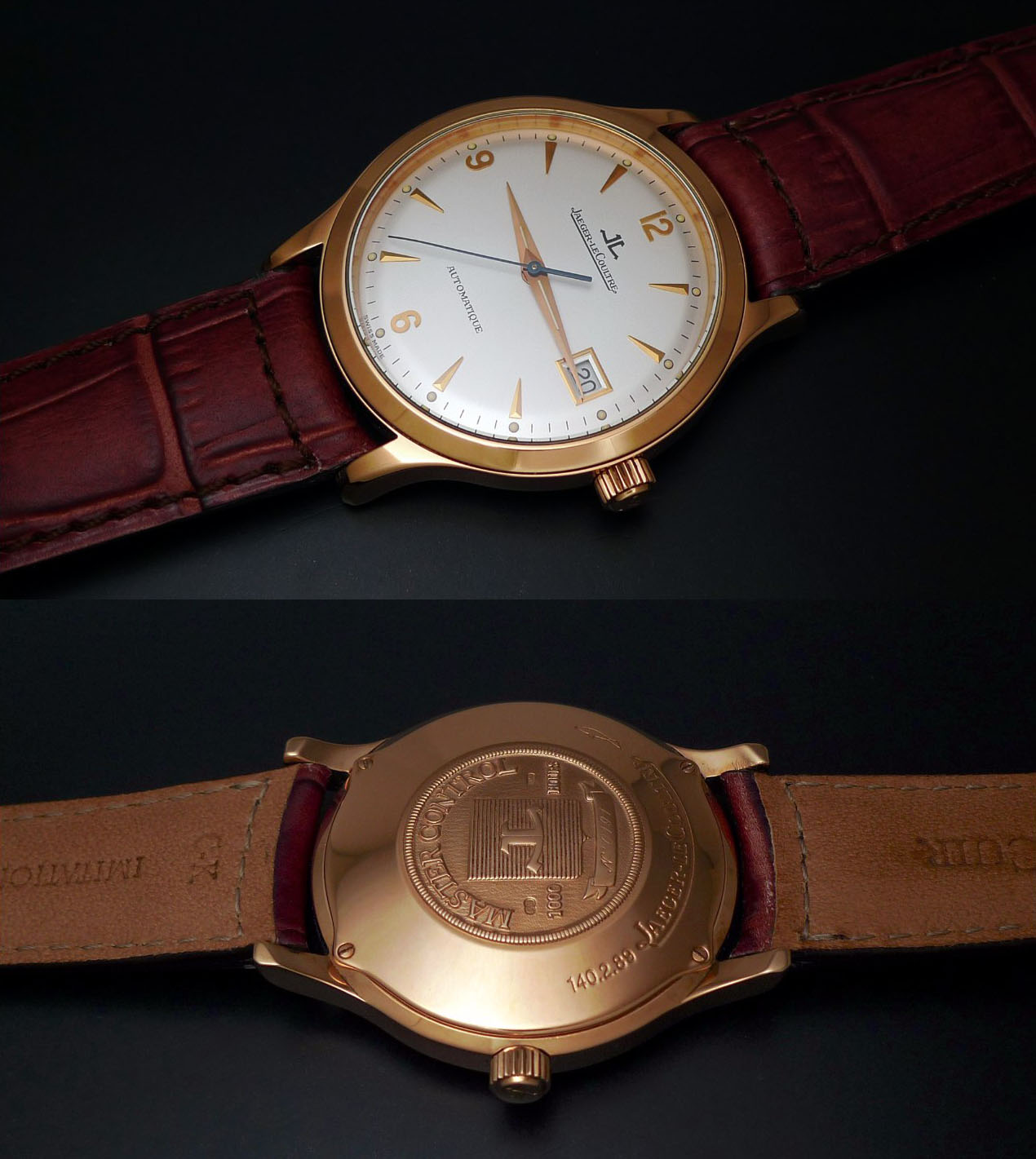
The Master Control watches are not ostentatious, nor were they meant to be. Across the plethora of complications to be given the Master Control treatment (time-and-date, power reverse and pointer date, chronograph, dual-time, triple date, perpetual calendar), robustness and accuracy were placed front and center. At the heart of the designation “Master Control” lies one of the watchmaking world’s first proprietary tests of chronometry and reliability. Before any watch can qualify for the “Master Control” designation, the cased-up movement undergoes a battery of tests of its chronometric performance, power reserve, resistance to temperature change and everyday shocks, and water resistance. In short, the caseback oval stamp with the words “1000 HOURS CONTROL” attests to the fact that every watch in the Master Control collection leaves the factory with the manufacture’s seal of approval.
The Jaeger-LeCoultre Master Control Perpetual Calendar – The Basics
The perpetual calendar in the first Master Control collection was introduced in 1997 and was phased out after a run of seven years. The watch measures 37.2mm in diameter and is a mere 10.1mm in height, an incredible feat given the complications housed inside.
The case is a simple affair, with a thin caseband and lugs that flow into the case. The lugs have a small downward drop and are gently beveled on their outer edge. A flat conical bezel frames the dial, which is either silver or black in the references in stainless steel. The dial is a masterclass in legibility, without the multiple overlapping indications found in many other classically styled perpetual calendar models. There is a pointer-style date subdial at 9 o’clock, the days of the week are shown at 3 o’clock, the months at 12, and the moonphase at 6 o’clock. There is no leap year indicator, but instead, a two-digit year display is hidden away neatly within the month display. The hands for the time are in the angular style known as dauphine and have contrasting finish, with one half being blasted, the other half polished – once again, the emphasis is on legibility. The icing on the cake is that this is a lumed perpetual calendar: there are thin strips of lume on the hands and small pips outboard the dart-style hour markers.
The Master Control Perpetual Calendar in steel is most well known in the series. However, the flagship model in the Master Control collection was also offered in red gold, white gold, and platinum. Though the red gold version was hardly a high-volume piece, the white gold and platinum were even more special, as they had hunter-style casebacks in the matching case metal. The platinum watches, fitted with fetching slate blue dials, were released as a 250-piece run in 2001. And that platinum series had a solid platinum winding mass attached to the periphery of the rotor, as opposed to the 22-carat gold winding mass found in all other Master Control Perpetual models. The white gold models were a boutique-only edition announced just before the discontinuation of the range in 2004 and had sunburst ruthenium dials.
The watch is powered by a modular movement, the caliber 889/440/2. The 889 is a thin yet durable tractor movement that served as a base movement for many complicated watches, not just at JLC, but also at Audemars Piguet (AP 2124) and Vacheron Constantin (as the VC 1126). The movement featured bidirectional winding, an open barrel construction for reduced thickness, and six-position adjustment. The perpetual calendar version of the movement, with the suffix “/440/2” denoting the addition of a dial-side module developed by IWC watchmaker extraordinaire Kurt Klaus for the IWC Da Vinci in 1985.
It is thanks to this module that the Master Control Perpetual is such a user-friendly watch, particularly for a perpetual calendar. The owner doesn’t have to fuss about with multiple pusher adjusters recessed into the case flank, each one keyed to each of the calendar displays. No, the Kurt Klaus system is mechanically programmed – the watch “knows” every combination of month, day, date, year, and moonphase. If you correctly set the date, all other indications will also be correct. The only downside to this is that everything is controlled via the crown. If the crown is in the wrong detente, instead of advancing the time, you could move the date forward by a week or more before you realize your mistake. Since the calendar can’t be adjusted backward, the only fix is to allow the watch to run down and correct itself or to send it in for a costly reset.
JLC addressed this by decoupling the calendar from the crown, instead choosing to go with the time-tested solution of a case flank pusher corrector at 8 o’clock.
Why should you consider the Jaeger-LeCoultre Master Control Perpetual Calendar?
The perpetual calendar is an intimidating complication, at least to me. So many star wheels, springs, and levers work together in concert to display the most comprehensive calendar complication that they seem like they must be fragile things indeed!
Leave it to the masters at JLC to package their flagship Master Control model in such a user-friendly way. First of all, this is a perpetual calendar that is available in stainless steel, so you can easily wear it as your everyday watch without having to worry too much about scratches and scuffs. Add to that the legibility of the complications and the ease of use of the calendar display. This is a high complication watch that is meant to be worn and enjoyed, not locked away in a safe!
It’s the small details that speak to me here – take a closer look at the dial. It looks austere, at first, but then you notice the small and quirky details. There, at 6 o’clock, is an applied Arabic numeral, the only one on the dial. Oddly, it works, balancing out the visual weight of the months display at 12 o’clock. Look closer at the reference 140.8.80.S – stainless steel with a black dial. Do you notice anything about the lume pips…? Yes, they’re encircled in red, a sporty and, dare I say it, youthful addition to what is supposed to be a “grown-up” watch.
But my favorite detail has to be the small cutout on the dial just above the cannon pinion that serves as a day-night indicator, which acts as a warning not to change the calendar indications due to the risk of potentially damaging the movement. But that’s not all – the hands have a small cutout in them that lines up with the day-night indicator so that is always visible. The folks at JLC really did think of everything!
And finally, let’s talk about the value proposition. Vintage JLCs are well appreciated as offering particularly strong value, and the Master Control Perpetual Calendar is no different. In steel, prices for the black dial version are just creeping into EUR 12,000-15,000 range, with the red gold reference commanding a slight premium. Expect to pay around EUR 10,000 more for a model in platinum.
Though it might seem as if the Reverso is JLC’s sole poster child, the Master Control line has enjoyed a thirty-year run and remains a core collection in the brand’s lineup. After the end of the run of the first generation of Master Control in 2004, the line was facelifted and given a more aggressive look to go along with the use of JLC’s proprietary Compressor crown system. The Master collection returned to its elegant roots after 2010 and has enjoyed renewed success. 2020 saw a significant update, with the rollout of the next generation of JLC movements fitted with silicon escapements.
From its utilitarian roots, the “Master” name has, in its modern form, been applied to a broad range of JLC high complications such as the Master Grande Tradition Tourbillon Cylindrique or the 2019 Master Grande Tradition Gyrotourbillon Westminster Perpétuel. Nonetheless, the philosophy at its core means that, even at their most complicated, the watches of the Master line are built to last. In the case of the Master Control Perpetual Calendar, I would even venture a guess that it might last to perpetuity!

